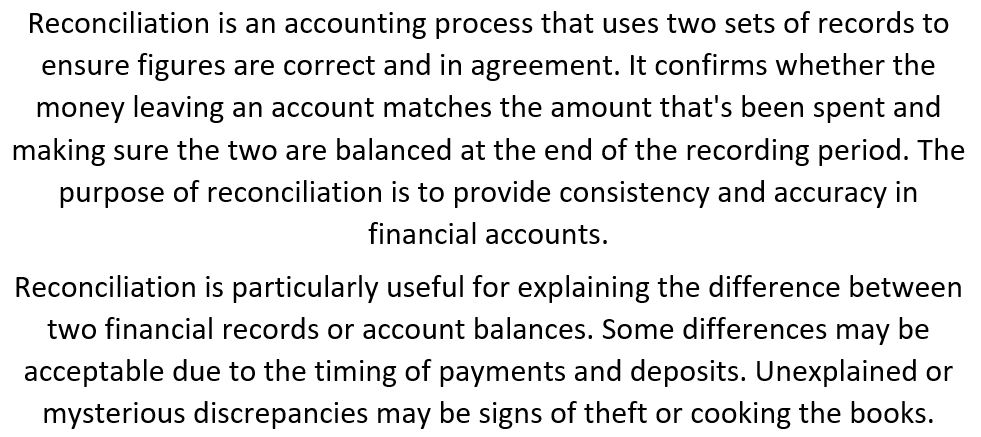A Bookkeeper’s Tip: Reconcile, reconcile, reconcile
If that’s your reaction to the title of this blog, then I strongly advise that you keep reading. Please, for the good of your business keep reading. If you’re still not interested, then might we suggest engaging a bookkeeper, such as Building Blocks for Business, to do this for you?
What is a reconciliation?
This is the Investopedia definition of a reconciliation:
So, in this instance, reconciliations assure you that your accounts are correct and that there is no fraudulent activity happening. If you’re starting a business, then get into the habit of reconciling your accounts straight away.
How is the reconciliation done?
Let’s look at a bank account reconciliation using accounting software.
- In your accounts make sure that all the bank account transactions have been dealt with, such as payments allocated to the right creditors and receipts allocated to the right clients or debtors.
- Compare the bank balance in your accounts to what your bank states the balance is for the same day.
- If there is no difference in the amounts and you can see that all the transactions match each other, then the bank account is reconciled.
- If there is a difference, then the account is not reconciled. You need to know that there is a legitimate reason for the difference, such as;
- A deposit into your account with no corresponding sales invoice
- An under or over payment, or re-payment, of a bill (keep reading to find out why this should never happen)
- An under or over amount received for a sales invoice
- Unauthorised transactions from your bank account.
- List the differences you find and add the total amount to the bank balance in your accounts. This total will agree to the balance on your bank statement if you’ve found all the differences and you’ve reconciled the bank.
What should I be reconciling?
Bank Account – this should be done at the end of each month as a minimum, but businesses with lots of transactions throughout the month should be reconciled daily.
Accounts Payable – Creditor statements are usually issued at the end of a month ready for paying on the due date. Every month reconcile each statement back to the amounts in your accounts. Differences may be because of bills and credit notes received but not entered or your creditor not correctly allocating your payment. Ensure your accounts reconcile to the creditor statements so that you know exactly what you should be paying. A good mantra is “not a cent leaves my business unless I know that it’s the right amount to pay”.
Stock reconciliation – Usually done at year end, but if you’re doing management accounts, a more frequent reconciliation may be required. A stock take is performed and if the amounts/value don’t agree to the accounts then an adjustment of the accounts is required. Like all reconciliations you should investigate the discrepancy; is it because items have been marked down; there has been theft of stock; business processes & procedures are not robust enough?
There may be other reconciliations that your type of business should be doing.
If you don’t have the time or the inclination to do these reconciliations regularly then please give experienced bookkeepers, Building Blocks for Business, a call on 021 771 555, or email tania@bbfb.co.nz

